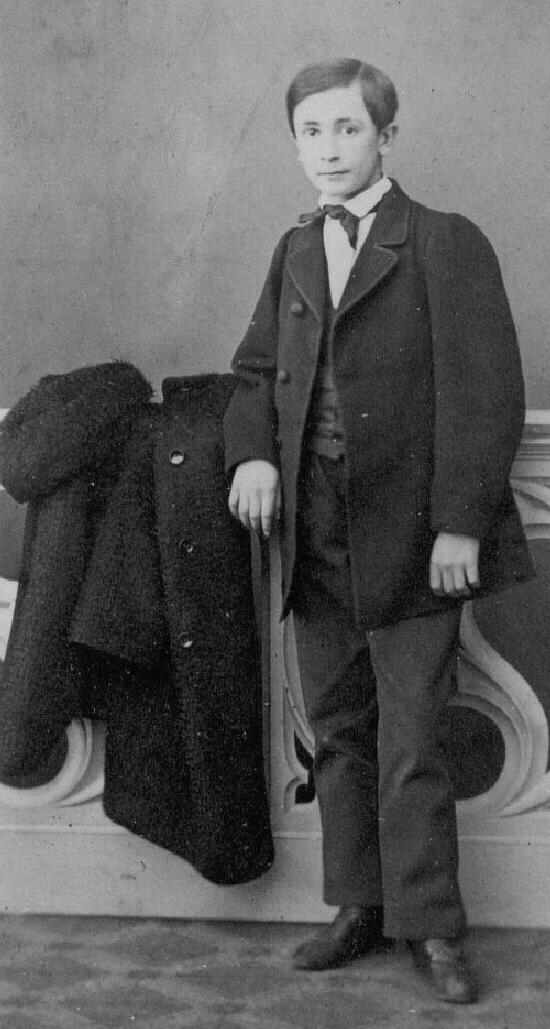
Boys' Pants and Trousers Chronology: 19th Century Decade Trends--The 1860s

Figure 1.--This German boy had his portrait taken in the 1860s. This miust be a new set of clothes. Notice how mother has added his overcoat and hat to make sure the entire set was included in the portrait. Notice the jacket and pants do not match. Most German boys in the 1860s wore long pants like the fashionably dressed boy here.
|
|
We have mnuch more information on fashion during the 1860s than than any other previos decade. This was not only because of the popularity of the new CDV format, but because pf posing trends. Most Daguerreotype subjects were posed sitting down because of the long exposure times required. The Daguerreotypists thus usually centered the portaits on closeups of the subjects torsos. Ambrotypes followed the same comventions. The CDV albumen prints had shorter exposure times and thus standing portraits were more common. And for some reason the photographer backed off and full figure portraits were much mofe common. This we see full outfits, including the boys' trousers and shoes.
Most boys in the 1860s wore long trousers. Suits with long trouers were very common, even for younger boys recently breeched. While virtually all olde boys wore long pants, quite a few younger boys wore shortened-length pants. Some younger boys migh wear shortened-length pants, but it was by no means universal. . Knee-length pants become common in England for younger boys during the
late 1850s. This trend was even more pronounced in the 1860s. Knee pants by the late 1860s had spread
to America, especially among affluent families in the major cities. It was less common in rural areas and America was still a largely rural country. A good example here is an English family with the boys wearing suits wth cut-away jackets and bloomer knickers. This trend was also seen on the Contient, aespecially fashionable France. The strength of this trend varied from country to country. Age was a major factor. Knee pants and bloomer jknickers were only worn by younger boys. Most boys by 10 years of age or earlier wore long pants. Away from fashionable cities, even younger boys wore long pants.
HBC

Navigate the Historic Boys' Clothing Web Site:
[Return to the Main 19th century trouser chronology decade page]
[Introduction]
[Activities]
[Biographies]
[Chronology]
[Cloth and textiles]
[Clothing styles]
[Countries]
[Topics]
[Bibliographies]
[Contributions]
[FAQs]
[Glossaries]
[Satellite sites]
[Tools]
[Boys' Clothing Home]
Navigate the Historic Boys' Clothing Web chronological pages:
[Early 19th century]
[Mid-19th century]
[The 1860s]
[The 1870s]
[The 1880s]
[The 1890s]
[The 1900s]
[The 1910s]
[The 1920s]
[The 1930s]
[The 1940s]
[The 1950s]
[The 1960s]
[The 1970s]
[The 1980s]
Navigate the Historic Boys' Clothing Web style pages:
[Skeleton suits]
[Eton suits]
[Norfolk jackets]
[Kilts]
[Knicker suits]
[Blazers]
[Short pants suits]
[Long pants suits]
Created: 6:22 AM 4/7/2006
Last updated: 4:00 AM 5/20/2008


